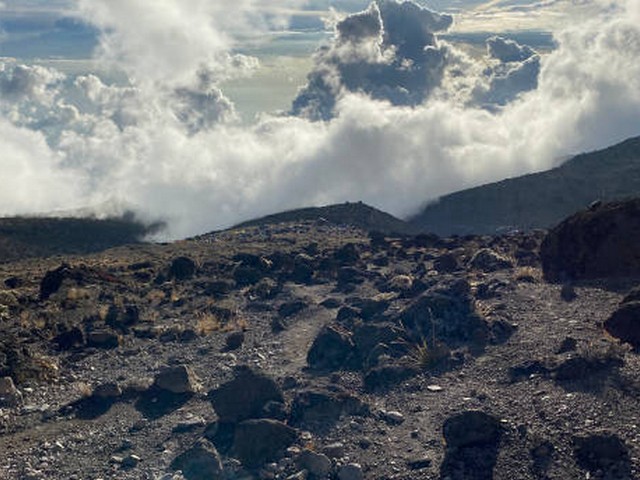Environmentally Friendly Trekking Gear For Kilimanjaro: A Guide to Conscientious Climbing
At the Kilimanjaro Centre for Trekking and Ecotourism (KCTE), we understand the profound connection between nature and the human spirit. Climbing Mount Kilimanjaro is not just an adventure; it’s a pilgrimage to the roof of Africa. While the journey is exhilarating, it carries a responsibility—to tread lightly and respect the natural beauty of our planet. This is why choosing environmentally friendly trekking gear for Kilimanjaro is crucial for both the protection of the environment and the quality of your experience.
Why Choose Eco-Friendly Trekking Gear?
Climbing Kilimanjaro is an opportunity to witness the untouched splendor of one of the world’s most iconic mountains. However, the influx of climbers each year can take its toll on the local ecosystem. By selecting eco-friendly gear, you’re contributing to the preservation of Kilimanjaro’s unique habitats, reducing waste, and promoting sustainable tourism practices that ensure future generations can also enjoy this majestic mountain.
Essential Environmentally Friendly Gear for Your Kilimanjaro Trek
Clothing: Layer Wisely and Sustainably
Opt for clothing made from organic or recycled materials. Look for certifications like Bluesign, OEKO-TEX, or GOTS which ensure that products are free from harmful chemicals and made through environmentally and socially responsible manufacturing processes. Brands like Patagonia, Icebreaker, and PrAna offer sustainable outdoor apparel that doesn’t compromise on performance or durability.
Footwear: Step Up Sustainably
Your hiking boots are perhaps the most critical piece of equipment on Kilimanjaro. Choose brands that are committed to reducing environmental impact. Look for boots made from recycled rubber soles and ethically sourced leather, or better yet, vegan alternatives. Companies like Merrell and Timberland provide eco-conscious footwear that maintain comfort and ruggedness needed for the trek.
Backpacks: Carry Consciously
A durable, lightweight backpack is essential for carrying your gear without contributing to physical strain. Eco-friendly backpacks are typically made from recycled materials and designed for longevity. Brands like Osprey and Patagonia offer environmentally responsible options that are perfect for the diverse conditions on Kilimanjaro.
Sleeping Bags and Tents: Eco-Friendly Camp Comfort
Sleeping gear made from sustainable materials can also enhance your trekking experience. Look for sleeping bags insulated with RDS (Responsible Down Standard) certified down or synthetic materials from recycled PET bottles. For tents, prioritize durability and the use of eco-friendly materials to decrease the environmental footprint of your campsite.
The Benefits of Eco-Friendly Gear: Performance Meets Planet
- Reduced Environmental Impact: Eco-friendly gear uses materials that are sustainably sourced and processes that minimize waste, helping preserve Kilimanjaro’s ecosystems.
- Enhanced Durability and Efficiency: Companies that invest in sustainable practices often produce higher quality, innovative products. This gear can withstand the harsh environments of high-altitude trekking and offer better long-term value.
- Support for Ethical Practices: By choosing eco-friendly gear, you are supporting companies that prioritize fair labor practices and community engagement, ensuring that the local communities around Kilimanjaro also benefit.
Packing Tips for a Sustainable Kilimanjaro Trek
- Pack Light: Reducing your load not only makes your climb easier but also minimizes the impact on the environment.
- Reuse and Recycle: Opt for gear that can be re-used multiple times and recycled at the end of its lifespan.
- Avoid Single-Use Products: Bring reusable water bottles, cutlery, and storage containers to reduce waste on the mountain.
Why Book Your Climb with Kilimanjaro Centre for Trekking and Ecotourism (KCTE)?
KCTE is committed to sustainable tourism. We ensure that all our tours are conducted in an environmentally responsible manner, adhering to the best practices for ecological conservation. By booking your Kilimanjaro climb with us, you’re choosing a partner who values the preservation of the mountain as much as you do.
Frequently Asked Questions
Q1: How do I verify if my gear is environmentally friendly?
A1: Look for certifications like Bluesign, OEKO-TEX, or GOTS on your gear. These labels ensure that the products meet strict environmental and toxicological criteria.
Q2: Can eco-friendly gear withstand the harsh conditions of Kilimanjaro?
A2: Absolutely! Eco-friendly gear is designed to be durable and withstand extreme conditions. Many reputable brands specialize in high-performance, sustainably made outdoor equipment.
Q3: Where can I purchase eco-friendly trekking gear?
A3: Many outdoor retailers now offer a range of sustainable products. Check online or visit your local outdoor store and look for products with eco-certifications.
Q4: Is eco-friendly gear more expensive?
A4: While some items might have a higher upfront cost, they often offer better durability and longevity, providing more value over time.
Embarking on a journey to Kilimanjaro with environmentally friendly trekking gear is not just a choice—it’s a statement of your commitment to preserving the beauty of the world’s greatest landscapes. At Kilimanjaro Centre for Trekking and Ecotourism, we are here to guide you every step of the way, ensuring your adventure is as sustainable as it is unforgettable. Join us in walking gently upon the earth, and together, let’s make your Kilimanjaro experience a model for responsible and inspiring mountain trekking.
Book your climb today with Kilimanjaro Centre for Trekking and Ecotourism (KCTE) and take the first step towards a greener footprint on the majestic slopes of Kilimanjaro. Let’s conquer the heights responsibly!




